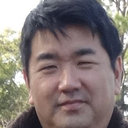Preparation of a specific monoclonal antibody to asiaticoside for the development of an enzyme-linked immunosorbent assay.
کلید واژه ها
خلاصه
Asiaticoside (AS), the major active component of Centella asiatica (L.) Urban, is used as a memory enhancer and for wound healing. We have successfully prepared monoclonal antibodies (MAbs) against AS, and developed an enzyme-linked immunosorbent assay (ELISA) system for its determination. AS was conjugated to the carrier protein bovine serum albumin (BSA), which acted as an immunogen. In order to confirm its immunogenicity, the ratio of hapten in the AS-BSA conjugate was determined by matrix-assisted laser desorption/ionization time of flight mass spectrometry (MALDI-TOF MS). After immunization, hybridomas secreting MAbs against AS were produced by fusing splenocytes with the mouse myeloma cell line, SP2/0-Ag14. After the screening, anti-asiaticoside MAb 2B4 was obtained. Weak cross-reactivities occurred with madecassoside (7.08%), but no cross-reactivities were observed with other related triterpenoid glycosides (<0.01%). The assay was suitable for quantitating AS in the range of 0.78 to 50 µg mL(-1). A good correlation of AS concentrations in crude extracts of C. asiatica between ELISA and HPLC methods was obtained (r(2) = 0.999). The contents of AS in various cultivated C. asiatica samples were assayed by the newly established ELISA. The recovery rates of AS in the samples were in the range of 95-103% with coefficients of variation of <10%. The intra- and inter-assay variations were 3.9 and 4.5%, respectively. The ELISA method described should prove useful as an analytical tool for quality control and standardization of medicinal plants and pharmaceutical products containing AS.


